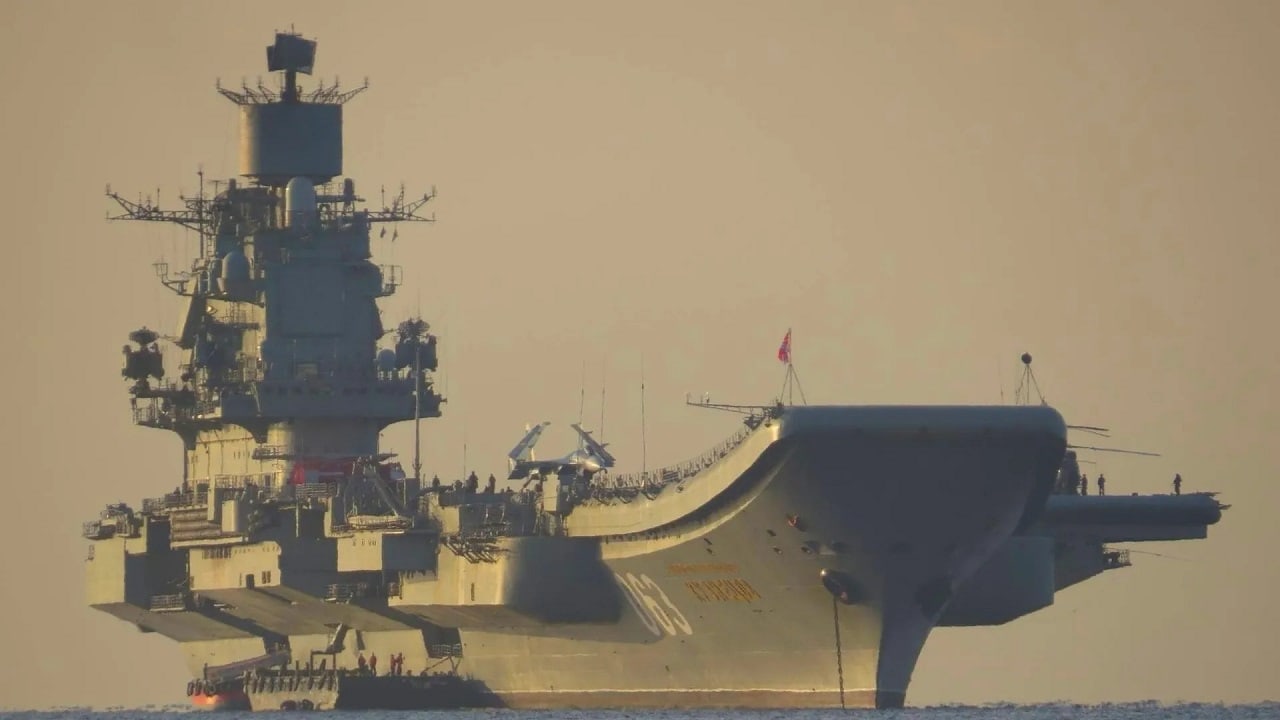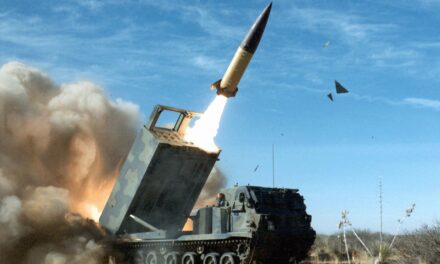We support our Publishers and Content Creators. You can view this story on their website by CLICKING HERE.
Key Points: The Russian aircraft carrier Admiral Kuznetsov, plagued by mishaps and prolonged repairs, might return to sea after seven years out of commission.
-However, its outdated Su-33 fighters, undertrained pilots, and repeated accidents—including fatal fires and a dry dock collapse—make its combat effectiveness questionable.
-Despite this, Russia clings to the Kuznetsov for its symbolic value as a power-projecting naval asset. With the Russian navy struggling amid losses in Ukraine, the carrier’s return is driven by propaganda needs rather than operational readiness, and its future success remains uncertain.
Admiral Kuznetsov: Could the Bad Luck Russian Aircraft Carrier Return to Sea?
Here we go again. The Russian navy thinks it has a comeback kid on its hands.
I am referring to that bad luck bucket of bolts Admiral Kuznetsov that may actually hit the seas again.
You can tell that I am skeptical of this aircraft carrier, which has been more trouble than it is worth. It hasn’t been in service for seven years and has endured mishap after mishap—even accidents that have killed people—sometimes with fire, which every sailor knows is one of the scariest situations on any ship.
Aircraft Wing Is a Mess and Not Ready for Combat
Let’s break this cursed ship down to see if there is any possibility that it could fight again someday.
What if it actually could hit the open sea? The first problem I see is the carrier flight wing. The clunky Su-33 naval fighter is outdated and was never good at anything except for fleet defense. The Kamov Ka-27 and Ka-27S helicopters can provide some anti-submarine warfare capabilities but they are only really good for search and rescue.
The pilots of these aircraft are completely out of practice, and they haven’t flown off the Kuznetsov in a combat situation since a terrible deployment to Syria in 2016 when two fighter jets were lost in just three weeks.
Russian aircraft carrier Admiral Kuznetsov (Picture source: Creative Commons.)
But the Russians don’t want to give up on the Kuznetsov. Every navy dreams of having a flat-top that can project power and serve as a floating airport to bring the fight to the enemy. Vladimir Putin’s navy has invested too much time, money, and resources on the Admiral Kuznetsov to turn back now, and the work continues despite all the bad press.
Putin’s Navy Is Suffering
The Russian navy has endured an awful war against Ukraine. The Black Sea fleet has been decimated and the Kremlin is looking for any good news that could reassure the country that it still has a functioning navy.
The maritime branch needs the Kuznetsov to return to the high seas to show that Russia could have a Blue Water Navy that could cover many regions around the globe. Service in Europe, the Arctic, and the Mediterranean could accomplish Putin’s dream of being a real naval power not seen since the Cold War.
This Aircraft Carrier Has Killed People, and I Don’t Mean the Enemy
The accidents have made the Kuznetsov a punchline to many jokes, but the reality is deadly serious. In 2019, a welding malfunction started a fire in the engine room. Two employees were killed, and 14 others were hurt.

In November of 2018, Admiral Kuznetsov was damaged when a 70-ton floating crane fell on the flight deck.
Then, there was the infamous dry dock incident in 2018. This tragedy killed a worker. That’s not all. A crane crashed into the ship’s deck tearing a large hole. Russian sailors probably don’t want to go near this cursed ship, but Putin is undeterred, and work continues.
Putin Doesn’t Understand Naval Strategy
Naval advisors to the Supreme Leader are probably lying to him about the carrier’s status. “Just one more year, boss, and we are back in business,” they are likely saying. The navy is not Putin’s favorite branch, he is more of a hybrid warfare adherent (think the annexation of Crimea with practically no resistance.) Putin doesn’t understand naval strategy. Oh sure, he knows that aircraft carriers are valuable, and he understands that national prestige is on the line, but he doesn’t comprehend how difficult carrier operations can be to execute.
Turning the Tide
Despite all of these negatives, there is still an outside chance that Kuznetsov could hit the water again. Flight deck operations are going to be a challenge for the reasons I noted above. Crews will have little experience unless you count the disastrous deployment to the Middle East eight years ago. Besides, those sailors are probably long gone by now. Putin will need new pilots and flight deck operators, plus aircraft maintainers.
Fortunately, the new recruits may not even know the history behind the Kuznetsov, but the older non-commissioned officers will fill them in quickly about this ship’s bad luck. Military personnel are often superstitious, and we know the Kuznetsov was born under a bad sign.
Look for more reports out of Moscow that the carrier is close to sailing again. It’s been an embarrassment, but the naval brass doesn’t seem to care. Russia desperately needs a positive story to tell for propaganda purposes and seeing the Kuznetsov back in action would provide a shot in the arm to a populace that is losing patience with the war against Ukraine.
About the Author: Dr. Brent M. Eastwood
Brent M. Eastwood, PhD, is the author of Don’t Turn Your Back On the World: a Conservative Foreign Policy and Humans, Machines, and Data: Future Trends in Warfare, plus two other books. Brent was the founder and CEO of a tech firm that predicted world events using artificial intelligence. He served as a legislative fellow for U.S. Senator Tim Scott and advised the senator on defense and foreign policy issues. He has taught at American University, George Washington University, and George Mason University. Brent is a former U.S. Army Infantry officer. He can be followed on X @BMEastwood.

 Conservative
Conservative  Search
Search Trending
Trending Current News
Current News 





